Liver fluke in cattle is a leaf-like parasite residing in the liver and bile duct of infected animals. It is characterized by the reduced growth rate, reduced production, reduced milk production, malnutrition, and death. The primary host of the parasite is cattle, and other susceptible hosts are sheep, goat, deer, rabbit, and horses. Grazing animals are more vulnerable than the animals are kept at intensive care. The incidence is more in late summer and autumn.
Consequences of Liver Fluke in Cattle
Live fluke in cattle is very common in grazing animals and have a severe consequence for the productivity of your farm. The most common effects are:
- If your cow has 100 flukes in its liver, it may reduce the milk production 400 liters per lactation.
- Untreated cows produce milk with 10% solids, especially affect the amount of butterfat.
- Reduce calf birth weight.
- Seriously hamper the growth rate of young animals.
- Reduce the feed conversion ratio (FCR) to your animals.
- Reduce the lifetime of your farm animals.
- Liver fluke precipitates other cattle diseases like Black disease and Salmonella in cows.
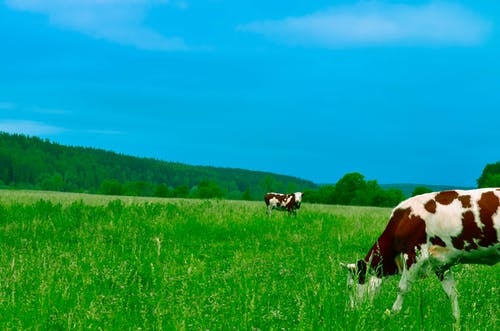
What Causes Liver Fluke in Cattle?
Hepatic fascioliasis is a tremadodal disease of ruminants caused by Fasciola spp, and acute illness is characterized by sudden death. In contrast, chronic disease is characterized by progressive malnutrition, diarrhea, anemia, and submandibular edema. Fasciola hepatica is the most common and essential liver fluke in cold countries and F. gigantica in warmer regions, including parts of Africa and Asia. Lymnaeid mud snail is the intermediate host of F hepatica. The most common, Lymnaea trunculata, is an amphibian snail with a wide distribution throughout the world.
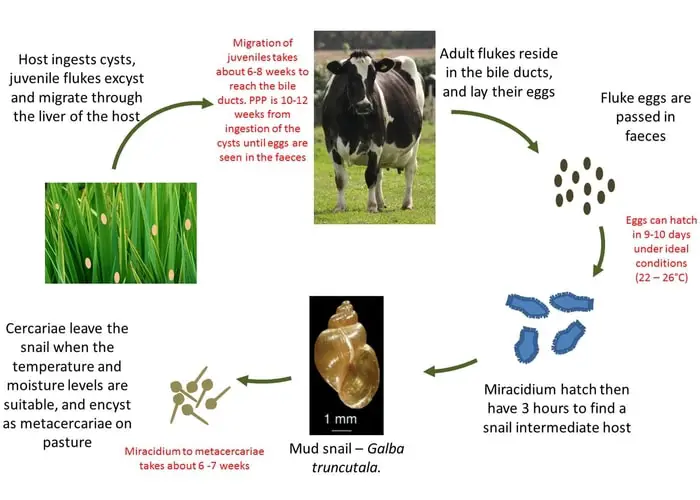
Life Cycle of Hepatic Fascioliasis
Adult Fasciola lives in the bile ducts producing eggs that are excreted with the feces and hatch releasing motile ciliated miracidium under the favorable environmental conditions. The miracidium has a short lifespan and must invade to intermediate host within 30 hours. After completion of several cycles, the miracidium leave from snail as cercariae, These cercariae attaches to the grass and converts into metacercariae then ingested by the cattle and other animals. These metacercariae cross the intestinal wall and finally shifted to the liver capsule. Adult Fasciola lives their final position bile duct.
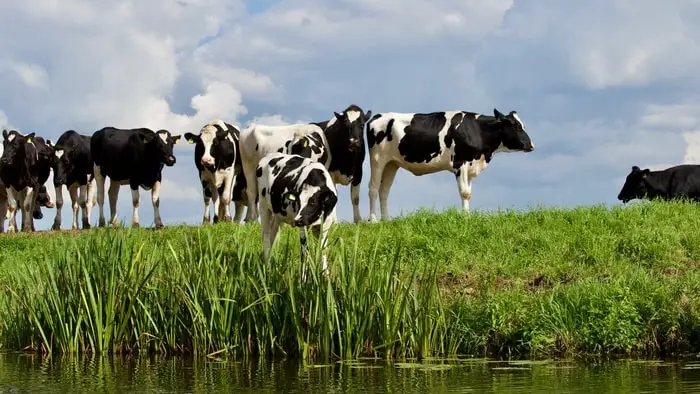
What are the Symptoms of Liver Fluke in Cattle?
There are three types of Fasciliasis sin cattle; acute, sub-acute, and chronic. The signs of Hepatic Fascioliasis are
- Sudden death due to the bleeding caused by the migration of excessive amounts of immature liver flukes.
- Rupture of the blood vessels.
- Damage of the liver parenchyma.
- Pale mucus membrane.
- Dullness and weakness.
- Weight loss.
- Submandibular edema.
- Subscapular hemorrhage.
- Chronic diarrhea.
- Hemorrhagic anemia with hypoalbuminemia.
Diagnosis of Hepatic Fascioliasis
The principles of diagnosis of liver fluke in cattle are epidemiologic history, clinical findings, and laboratory examinations. The account includes the known endemic area, history of grazing in low areas, and a snail colony in pastures. Detection of fluke eggs in the feces by microscopic examination. The oval parasitic eggs are thin-walled, double-layered, and yellowish-brown due to the presence of biliary pigments.
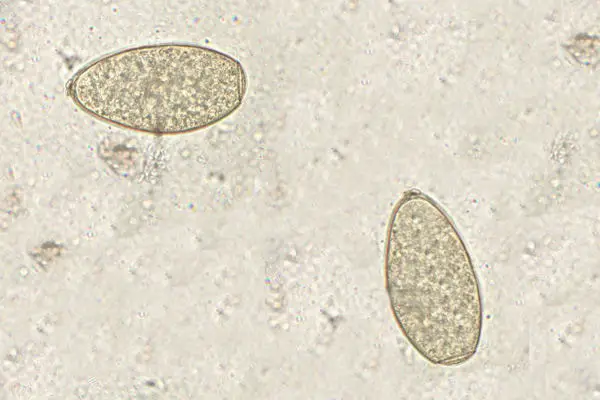
How Do You Treat Liver Flukes in Cattle?
All compounds are not equally effective against all stages of Fasciola in the body. So you must choose a product for the treatment of acute fascioliasis that can be effective against the juveniles, which damages the liver parenchyma. A compound active against adult fluke is required for chronic disease. Flukicides can be used therapeutically for treating the illness or prophylactically to prevent outbreaks.

Triclabendazole, Nitroxynil, Oxyclozanide, albendazole, and hexachlorophene are the choice of drugs. Dextrose saline, vitamin, and minerals mixtures you can give as supportive treatment.
How Do You Prevent Liver Fluke in Cattle?
There are two major preventive strategies for the hepatic fascioliasis in ruminants.
- Reduction of Snail Population. Snails can be reduced by restricting the size of their habitat. When the snail habitat is widespread, drainage is the best long-term method of reducing mud-snail populations such as L. trunculata. Control of water snail by fencing the water source and leading a pipe trough. Chemical snail control by molluscicides,
- Use of Anthelmintics. Reducing the pasture contamination by the destruction of adult fluke within the host by chemotherapy. Chemoprophylaxis method some flukicides binds plasma proteins or erythrocytes, thereby extend their period of action. Fluke-derived cathepsin L proteinase and hemoglobin molecules have given 75% protection against cattle infection in an early trial.
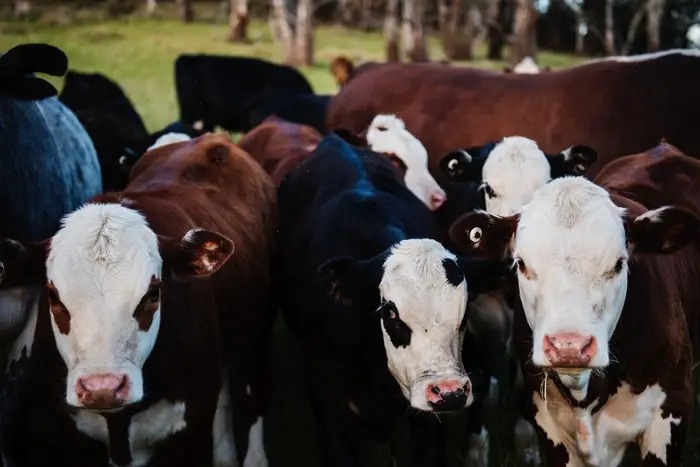
Concluding Remarks
Liver flukes in cattle is a deadly disease of animals that seriously hamper the production and performance of your farm. The preventive measures and regular deworming strategy reduces the incidence of the disease mostly. As a farm owner, you must routinely screen your animals by fecal examination for the presence of the fasciola eggs. A healthy animal is key to the success of your farm.